Lest We forget – Iyothee Thass (1845 – 1914)
Introduction
Iyothee Thass was an intellectual and social critic of 19 – 20 century Tamilnadu. In the primordial collective consciousness of the Dravidians he sensed the Buddhist values of equality and compassion. Working them out he severely criticized the brahminic hegemony that brought in estrangement and caste division among the people. Though a man of secular credentials he upheld the ethico-rational sensitivity that genuine religion can cultivate in promoting justice, righteousness and truthfulness. In this paper a brief attempt is made to construct the reformistic work which done by Iyothee Thass Pandithar.
Who is Iyothee Thass?
Born on 20 May 1845, Thass’s original name was Kaathavarayan. His grandfather had served as a butler to Lord Arlington. Kaathavarayan gained expertise in Tamil literature, philosophy, Siddha and had good knowledge of English, Sanskrit and Pali. After organizing the tribal people in the Nilgris in the 1870s, he established the Advaidananda Sabha in 1876. He launched a magazine called ‘Dravida Pandian’ along with Rev. John Rathinam in 1885. He issued a statement in 1886 announcing that the so-called untouchables’ are not Hindus. He established the Dravida Mahajana Sabha in 1891 and during the very first Census urged the so-called untouchables to register themselves as casteless Dravidians. This in fact makes Tamil Dalits the true descendents of the anti-Brahmin legacy which is today claimed by non-Brahmin non-Dalits. Iyothee Thass’s meeting with Olcott was a turning point not only in his life but also for the Tamil Dalit movement. In many ways, Thass was a forerunner of Dr B.R. Ambedkar.
Check also – 5th May in Dalit History – Death Anniversary of Iyothee Thass
Iyothee Thass and Buddhism
He led a delegation of prominent Dalits to Olcott and pleaded for his help in reestablishing Tamil Buddhism. With Olcott’s help Thass visited Sri Lanka and got diksha from Bikkhu Sumangala Nayake. On his return, he established the Sakya Buddhist Society in Chennai with branches in many places including Karnataka. Returning from his sacred pilgrimage to Colombo, Iyothee Thass issued a pamphlet in Tamil, entitled, Buddha: The light without distinction of day and night. In this, he systematically stated his project “Tamil Buddhism” a brief statement of Sakya Buddha’s life was followed by an exploratory survey of the Tamil epical-ethical literary tradition to explain the past glory, the fall and the present degradation of the Tamil lower caste and the antagonism between Brahmins and Sakya –Valluva (Parayar) Tamils; the emancipatory future for the original Tamils was sought to be projected as the modern rediscovery of the earlier Buddhist traditions through construction of Buddhist Temples, maintenance of Buddhist medical halls, Buddhist college, Buddhist young men association, celebration of Buddha’s birthday anniversaries and establishment of Buddhist charity fund to feed the poor. The pamphlet closed with an appeal to join these effort by singing the apprehend forms. The coming together of the initial group to implement project Tamil Buddhism was, thus, based on a common understanding of a collective-historical rationale and a social consensus in the modern sense of the term. However, not all the founding members of the society took ‘pancha silam’ and became Buddhist. The Sakya Buddhist society started its activities in 1898 with religious meetings on Sundays, semi-public lectures on socio-religious issues by learned men of all faiths and confessions and conversions to Buddhism that is, taking of pancha silam and enrolling as members, though in small numbers, yet continuously. Soon the Sakya Buddhists were recognized as an independent entity by other international Buddhist bodies and a flow of visitors, monks and lay people started and increased with passing years. Writing about those early years, Iyothee Thass says: “lectures are delivered every week in the hall of the society in addition to the occasional lectures delivered here and there in the city of Madras. Thus a great interest is aroused in the minds of people in the life and teaching of our Lord Buddha. And not a few have been the conversion to the faith of the master… Some 260 Buddhist visitors, bhikkus and lay men and women from Holland, china, Japan, Burma, Ceylon, Siam, Singapore, Chittagong, Benares, Calcutta, Bodh Gaya and other places have called and stayed here on different occasions”.
The followers of the Buddha were accused of godlessness, anti-religion customs and tradition, defiance of Vedas and Vedic authorities and, in general, of abetting anarchy and chaos in the society. But such opposition and obstacles, apparently were not new to the founding – father of the society, Iyothee Thass. His generally calm and courteous behaviour, particularly his gentle persuasive language, worthy of disciple of the compassionate polemics was to continue for long as part and parcel of the subaltern religious movement. Men from all walks of life and entire social spectrum began to gather around the erudite Pandit Iyothee Thass to hear him, expound his views supported with extensive and numerous reference to Tamil literature, history and religion.
Oru Paisa Tamilan
Iyothee Thass launched “Oru Paisa Tamizhan”, a weekly newsmagazine, from his Royapettah Office and printed it at the Buddhist Press of one Thiru Adimoolam. The journal’s statement of intent explains; “….some philosophers, natural literateurs got together and published this Oru Paisa Tamizhan in order to teach justice, right path, and truthfulness to people who could not discriminate between the excellent, mediocre and the bad”. However, Swapneswari Ammal, an early colleague of Iyothess Thass, publisher and editor of a magazine called Tamil Woman, put down the objective of the paper simply as ‘to explain and propagate Buddhism’. Of the two, it was probably the editor Iyothee Thass’s view that was more accurate. Oru Paisa Tamizhan was, also indeed, a Buddhist weekly as Swapneswari Ammal put it; it served as a newsletter linking all the new branches of the Sakya Buddhist Society. It instructed the neophytes in the tenets, traditions and practices of
Tamil Buddhism, gave information and reports of the new developments in the buddhist world, sought to interpret the subcontinent’s history, in general, and tamilakam’s in the particular, from the Buddhist point of view, etc. But it was note national-moral discourse against all forms of brahminism that had gained ascendancy under the colonial regime.
Oru Paisa Tamizhan came out week after week without fail for the rest of Pandit Iyothee Thass’s life, carrying a wealth of information on current events, interpretation of Tamil history, religion and literature and polemics, against the dominant and oppressive religio-cultural discourses of the time. The influence and significance of this modern vehicle of thought went far beyond the narrow confines of religious Buddhism. Along with the creation and nurture of a religiously united community cutting across caste barriers it undoubtedly sowed the early seeds of social revolution, cultural renaissance and political movement in colonial tamilakam as a whole.
The role of Iyothee Thass in wielding this double-edged sword was clearly primary and his initiative certainly bore the marks of charisma. Soon, the eidtor-publisher was able to gather around himself progressive elements from all over the Tamil land men and women no less erudite and committed to the emancipatory cause of the sub-alternised communities. Regular writers in the opening years of the journal included C.M.E.Murthy, Swapneswari Ammal, T.C.Nayarana Pillay, A.P.Periasswami Pulavar and others. The intellectual contribution of these combined with the material support by scores of others. Thamizhan was shortly transformed into a centre and an institution with a distinct religio-cultural ideology and strategy for social action.
Dravidian Upsurgence: Iyothee Thass and the Justice party
Iyothee Thass, a Dalit by birth and a Buddhist by conviction, was an outstanding figure in the socio-cultural awakening which preceded the spectacular rise of a non-brahman movement in Tamil land. An ideologue and a cultural crusader, Iyothee Thass’ novel ideas and activities broke new ground in the subaltern struggle for identity, human dignity and justice. Realizing the liberatory potential of Buddhist tradition and drawing o the Tamil-Buddhist connection in the past, Iyothee Thass was the first to interpret the history, religion and literature of the Tamils from the view point of a Buddhist presence in the region. His writings taken together with the work of some of his associates like Masilamani comprise a corpus which represents a Buddhist vision of the Indian past. Part history and part polemic, their writings anticipated, in many ways, the historiographical writing of Ambedkar.
Iyothee Thass who led this movement from the front also spearheaded a campaign for education among the untouchables. Along with his colleagues he set up several schools in lowered caste enclaves in urban centers. A Tamil scholar and Siddha medical practitioner, he ran a popular weekly, ‘Tamizhan’, for years. Besides, he published scores of pamphlets and tracts by him and his associates which were widely circulated among Tamils every where. The articles he wrote for Tamizhan give an idea of the astounding range of his concerns: caste hegemony, untouchability, indigenous medicine, agricultural rituals, folk deities, issues involved in a census and conversion, Buddhism and Jainism in the Tamil land. His writings are remarkably modern not only for their insight into the nature of society, but also for espousing the cause of social emancipation, Buddhism, rationalism and the new egalitarian Dravidian identity.
Iyothee Thass was among the earliest non-brahman, Adi Dravida intellectuals who presented a systematic and sharp critique of brahmanical power, the brahman’s role in the modern society and polity, and above all, the brahman’s espousal of a problematic nationalism. He drew attention to rampant civil injustices and various acts of social and ritual discrimination that ensured Brahman exclusivity. He cited several instances of prejudice and discrimination practiced by not only Brahman proponents of nationalism, but by the largely Brahman owned press and the Brahman publicists who mediated and engineered public opinion. It is remarkable that he located the power of the modern, secular Brahman in the control he excercised over the construction of public opinion. On many occasions, he pointed out the caste bias and rancour prevalent in the orientation and presentation of events or opinions in the brahman-dominated nationalist press.
Led by a host of civic leaders and social critics like Iyothee Thass, the southern people began a battle for the recovery of their past as well as establishment of their rights in the present. The intellectual ferment thus generated unleashed forces that led to the Madras Presidency consisting of Tamil Nadu, Karnataka, Andhra and Malabar Kerala. The south Indian Liberal Federation, commonly known the Justice party was formedin1916, on an anti-congress, anti-brahmanical plank with the objective of radical redistribution of socio-political power. Thyagaraya Chetty and T.M. Nair played a pivotal role in the shudra movement by issuing in December 1916 the Non-Brahman Manifesto against the overwhelming preponderance of brahmans in the fields of education, public service, and politics.
Leading Justicites hammered home the point that the brahmans had usurped all real power, while the toiling masses, cultivators and others who constitute 97 per cent of the population had not even a semblance of power in their hands. Demanding democratic representation fro non-brahman castes in the fields of education, administration and legalization, Justice leaders lashed out at the brahman-dominated Congress nationalism, and claimed that the non-brahman movement cherished very different ideas about Indian nation-building and national representation.
Presenting the Justice road-map, leaders like Thyagaraya Chetty and Nair exuded confidence that the non-brahmans could attain a unity and wholeness, both in their resistance to the Brahman power and through assertion and practice of an alternative culture and community with their own values and conventions.
In 1920, the Justice party won a remarkable victory in the elections to run a diarchic government in the Madras Presidency. On assuming office, it passed a Government Order on 16th September 1921 directing an increase in the proportion of posts in government offices held by non-brahmans. During its tenure the Justice party also brought in progressive legislation pertaining to intermarriage, franchise for the common man, abolition of devadasi system, throwing open temples to depressed classes, regulating temple administration and bringing it under the control of the state, and educational facilities and reduction of fees for weaker sections. Above all, it did a splendid job in promoting primary education, women’s education and a more viable technical, industrial and agricultural education.
Conclusion
The thoughts of Iyothee Thass orbit around sole trait, reinterpretation. That means, reinterpreting the history, religion, literature, tradition, etc. In this context, his illustriousness in literature, linguistics, and history supports him in the construction of a grand discourse called Tamil Buddhism. His expertise in languages like Pali and Sanskrit other than Tamil dispenses radically interesting vestiges for this project.
Therefore the disgusting socio-cultural reality of dalits in present day Tamilnadu is not because of their origin as perplexed by Brahminic traditions, but through the political annoyance as well as the cowardliness of Brahmins, the dalits were inscribed as untouchables. Iyothee Thass spent most pages in his writings for arousing the consciousness of being transgressed. Similarly he desired to cognize the dalits about their Buddhist antecedents. Once the historical fallacy is reasoned out by the ‘ancient Buddhists’, he visualized the reinvention of tradition that affects the rescue from the castiest context. Despite Iyothee Thass accomplished as a multifarious personality till his unanticipated demise on May 5th 1914, mysteriously the modern historians forgot him.
Source- Krantijyoti (Written By Mr. Ashish Jiwane)









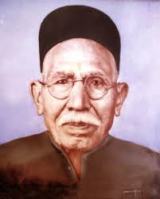
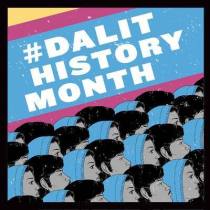
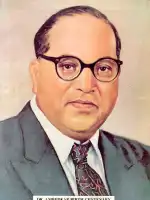


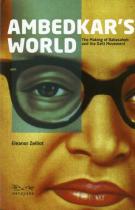
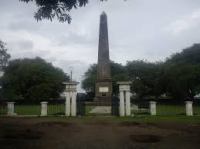
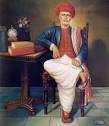


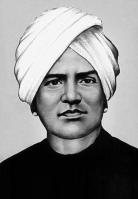

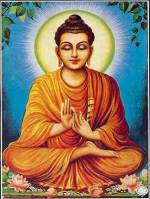



Iyothee thass was a great human being and one of the great personalities of India. He challenged Brahminism and fought against the hegemony of the ‘Jews of India’, the Brahmins.
LikeLike
Reblogged this on marichikarainbow.
LikeLike
I am much indebted to Dr. B.R Ambedkar’s Caravan for bringing out a detailed Article on most famous tamil scholar who is intrumental for bringing out world Famous Tamil work By thirvalluvar who was both A tamilian and and Dalit As indicated in your Write up Iyothidasar was forerunner to to our Bab Sahib in many ways. In fact first he stared the Dravidian Movement through which the Dravidian parties ruling the Tamilnadu for the past 46 years. He revived Buddhism in Tamilnadu and India after a very long time in India. I am expressing my heart felt gratitude on behalf of my self and also on behalf of Dalits in Tamilnadu to Dr Ambedkar’s Caravan Jai Bheem and Jai Buddham
LikeLike
Jai Bhim!!!!
LikeLike
Thanks
Jaybhim
LikeLiked by 1 person